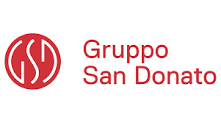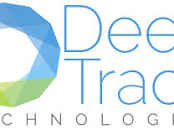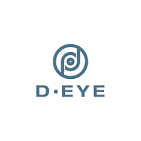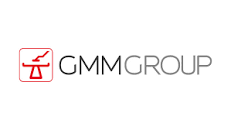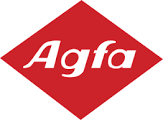Sintesi
The global diagnostic imaging market has seen substantial growth, with a notable increase across different regions and technological categories. In the years starting from 2020, a trend of increased imports of medical imaging equipment is evident in Italy, indicating a rising dependence on foreign technology. Particularly, Germany is a significant exporter to Italy. Moreover, growth is also identified in exports, particularly for X-ray equipment, with a diverse set of trading partners. Italy's healthcare infrastructure encompasses a range of facilities where private accredited institutions prevail in certain care types. Diagnostic imaging services across the nation are largely provided by specialist outpatient care facilities, and there is a blend of technological modalities in use, including nuclear medicine and diagnostic radiology. The equipment distribution among regions shows Lombardy, Latium, and Campania having the highest numbers. Demographic data suggest an aging population with a median age inclined towards the elderly, which, along with variable household incomes, affects the demand for diagnostic imaging. The market itself is characterized by a small number of dominant international players, given high entry costs and significant R&D involvement, with a complex value chain that includes equipment manufacturing, maintenance, and data processing software. Despite a small dip in 2021, the sector's companies and employment have been on the rise.
Diagnostic Imaging Market Trends in Italy: Harnessing Technology for Advanced Patient Care
As we delve into the Italian diagnostic imaging market, we encounter a health care landscape profoundly influenced by technological advancements and a robust demand for high-quality imaging services. Key to the market's dynamics is the interplay between aging demographics, economic capacity, and the integration of cutting-edge technologies such as artificial intelligence (AI) in imaging techniques like Computer Vision (CV). In Italy, the diagnostic imaging sector has been on a significant upward trajectory. Between 2017 and 2021, there was considerable growth of approximately 30 percent in industry turnover. This surge is indicative of heightened interest and investment, with a current market poised for further expansion. The incorporation of AI in radiology, particularly in anomaly detection and classification, heralds a new era of precision and efficiency in diagnostic procedures. On a global scale, the diagnostic imaging market is projected to soar to between $50 and $55 billion by 2028, reflecting a compound annual growth rate of about 5 to 6 percent from 2022 onwards. This growth is partly fueled by the increasing prevalence of chronic diseases, which necessitates early and accurate detection, and is further bolstered by developing economies with large populations and an escalating need for sophisticated health care solutions. In Italy, there's a distinct concentration in the northern regions where the bulk of health care facilities are located, such as in Lombardy, Piedmont, and Veneto. These regions house the largest number of health care facilities, correlating with the demand for diagnostic imaging services. For instance, over 2 million nuclear medicine and more than 50 million diagnostic radiology tests were conducted in 2021 alone, with a considerable proportion of these procedures taking place in the aforementioned regions. Furthermore, Italy's demographic profile plays a significant role in shaping the diagnostic imaging market. With a population of about 59 million, of which more than 5 million are foreign nationals, the country grapples with an aging population that increasingly requires medical imaging services. Moreover, with an average household income ranging between €19,000 and €54,000, many Italians allocate a portion of their resources to private health care due to the high costs associated with private diagnostic imaging. Health care expenditure also points to the substantial financial investment in maintaining well-being, with a 4.7 percent rise in health care spending witnessed in 2022. Chronic conditions like cardiovascular diseases and diabetes are prevalent, leading many Italians to seek frequent diagnoses, a significant percentage of which.
Key Players Shaping the Diagnostic Imaging Landscape
In the world of diagnostic imaging, several key players have cemented their position as leaders shaping the industry through innovation, technology, and services. These companies have consistently demonstrated the capacity to deliver advanced imaging solutions that cater to the evolving needs of healthcare professionals and patients alike. Let's delve into the highlights of these market giants:
General Electric (GE) Healthcare: A subsidiary of General Electric, GE Healthcare is known for its extensive range of medical imaging products. With a significant focus on research and development, GE Healthcare delivers cutting-edge technology in CT, MRI, and ultrasound systems, making it a go-to choice for many healthcare institutions.
Siemens Healthineers: As part of the Siemens AG group, Siemens Healthineers boasts a vast portfolio that covers not only diagnostic imaging apparatus but also laboratory diagnostics and advanced therapies. Their innovative imaging systems are designed to enhance clinical outcomes and streamline operations in medical facilities worldwide.
Philips Healthcare: A section of Royal Philips, Philips Healthcare has made a mark with its patient-centered approach to medical technology. This includes a broad array of diagnostic imaging solutions such as MRI, X-ray, and ultrasound devices. Philips emphasizes creating tools that improve the quality of care and patient experience.
Canon Medical Systems: Formerly known as Toshiba Medical Systems, Canon Medical Systems continues to push the boundaries of medical imaging with its cutting-edge CT and MRI machinery. Their commitment to patient safety and high-quality imaging makes them a preferred choice for diagnostic centers.
Hitachi Medical Corporation: Hitachi's expertise in medical electronics translates into their development of reliable ultrasound and MRI systems. With a dedication to precision and efficiency, Hitachi Medical Corporation's technology facilitates enhanced diagnostic capabilities.
Fujifilm Holdings Corporation: Long-standing in the imaging field, Fujifilm's expansion into healthcare leverages their expertise in image processing. They offer a broad spectrum of diagnostic imaging products, renowned for their innovative design and user-friendly interfaces.
per comprendere questo mercato
Dettaglio del contenuto
 Informazioni
Informazioni
- Pagine : 30 pags
- Formato : Versione PDF e digitale
- Ultimo aggiornamento : 04/04/2023
 Riepilogo ed estratti
Riepilogo ed estratti
1 Market Overview
1.1 Definition and presentation
In recent years, the field of diagnostic imaging has experienced exponential growth, becoming a key pillar in health care. According to the World Health Organization (WHO), technological advancement in this field has radically transformed methodologies for the diagnosis and treatment of diseases, providing healthcare professionals with increasingly sophisticated tools for the confirmation, evaluation and monitoring of different clinical conditions. With the global diagnostic imaging market projected to reach $53.344 billion by 2028, up from $38.034 billion in 2022, and a compound annual growth rate(CAGR) of 5.8 percent projected from 2022 to 2028, the importance of this sector is indisputable. In Italy, the market has shown significant growth, with a 30.3% increase in revenue from 2017 to 2021, signaling growing interest and investment in this area.
In parallel with technological development,artificial intelligence (AI) has begun to play a key role in diagnostic imaging, marking one of the most significant advances in the field of Computer Vision (CV). This innovation focuses on the analysis and interpretation of images and videos, and has been successfully applied in radiology for the detection and classification of abnormalities in X-rays, computed tomography (CT) scans, and magnetic resonance imaging (MRI). The use of AI has not only led to more accurate diagnoses but has also improved the efficiency of decision-making, paving the way for faster, more effective and more personalized health care.
The convergence of the rapid development of AI and the evolution of diagnostic imaging sets the stage for a revolution in patient care and treatment, with profound implications for the future of the healthcare industry. This market research aims to explore the current and future dynamics of diagnostic imaging, with a particular focus on the impact of artificial intelligence and growth prospects in the Italian context, in order to understand emerging trends and opportunities for innovation in the field.
1.2 The World Market
According to theWorld Health Organization (***), diagnostic imaging has developed rapidly and plays a central role in health care, supporting the diagnosis and treatment of diseases. Diagnostic imaging services include confirming, evaluating, and documenting the course of many conditions to ultimately identify response to treatment. The global diagnostic imaging market is expected ...
1.3 The Italian Market
As for the Italian market, this has been steadily and sharply increasing in recent years. Companies that perform diagnostic imaging services fall under the category of Ateco Code "**.** - Other health care services."It can be seen that from **** to ****, there has been a **.*% growth in the industry's turnover.
Evolution Turnover ...
1.4 Foreign trade
For the analysis of imports and exports of equipment used to perform medical imaging services, the following HS codes reported from the United Nations database were used. The HSs used are :
****: Equipment based on the use of X-rays or alpha, beta and gamma radiation for medical, surgical, dental or veterinary ...
2 Demand analysis
2.1 Overview of the hospital sector in Italy
In ****, the facilities surveyed are: *** for hospital care, *,*** for outpatient specialty care, *,*** for residential territorial care, *,*** for semiresidential territorial care, *,*** for other territorial care, and *,*** for rehabilitation care (***).
[***]
In the following table it is possible, then, to observe further characteristics of the Italian healthcare fabric. Here we have a division ...
2.2 The type of diagnostic imaging services provided and geographic distribution
There are several types of medical imaging that can be requested by patients. The two main types are nuclear medicine and diagnostic radiology. Nuclear medicine refers to the branch of medicine that uses radioactive substances (***) for diagnostic, therapeutic, and biomedical research purposes. While diagnostic radiology uses X-rays, CT, MRI, ultrasound, etc. ...
2.3 The machinery in different regions
In the following section, the number of certain equipment used to make imaging diagnoses will be analyzed. These are:
Echotomograph(***). Computerized Gamma Camera(***) : equipment used in nuclear medicine for scintigraphic imaging; no X-rays are used here Integrated gamma camera CT system(***) : equipment used in nuclear medicine for acquisition of scintigraphic images, ...
2.4 Socio demographic characteristics
There are several drivers that can drive the demand for diagnostic imaging. we can, therefore, find two main categories to keep in mind: demographic characteristics of the Italian population and income characteristics. The age distribution and median age of the Italian population are also important factors to consider in order to ...
3 Market structure
3.1 Market structure and dynamics
To analyze the size of the market, it is useful to dwell on the trend of business activity in the sector of manufacturing irradiation instruments, electromedical and electrotherapeutic equipment. The sector has been trending positively for the last five years taken into analysis, with the exception of the last year available ...
3.2 Value Chain
The following is a simplified value chain of the diagnostic imaging industry:
The market for medical imaging equipment manufacturing in Italy is held by a handful of international players; this is caused by high R&D and manufacturing costs, which raise barriers to market entry and restrain the arrival of new ...
3.3 Companies offering Medical Imaging Services
Clinical testing laboratories, X-ray laboratories, and other imaging centers are a crucial distribution channel for medical imaging products. These centers provide essential diagnostic services, using a wide range of imaging products, such as equipment for radiography, magnetic resonance imaging (***), and ultrasound. There are a total of *,*** facilities in Italy surveyed under ...
3.4 Main actors
4 Supply analysis
4.1 The different types of Equipment
There are many technological modalities of medical imaging, for multiple applications, the main ones of which are listed in the table below:
PIPAME
The following is a non-exhaustive list of the main types of medical imaging equipment:
Conventional and digital radiography Radioscopy / fluoroscopy CT / CAT SCAN Magnetic resonance imaging (***) Functional magnetic ...
4.2 Equipment prices and diagnostic imaging fees
Equipment prices
Prices for major medical imaging equipment can vary widely depending on the brand, the features and modifications made to the equipment, and the customer's needs. However, SNITEM offers a range of prices for high-end equipment:
Installation costs are added to the cost of the equipment. Installation costs between €***,*** and ...
4.3 An obsolete fleet
By ****, there are **,*** obsolete imaging equipment such as MRIs, PET scans, CT scans, angiographs, and mammograms. **% of conventional mammograms are more than ** years old, **% of PET scans are more than * years old, and **% of closed *.* T MRIs are still more than ** years old. A positive sign can be seen among portable ...
4.4 The Future of Artificial Intelligence in Diagnostic Imaging
Artificial intelligence (***), the area that focuses on image and video analysis and interpretation.
Artificial Intelligence at the heart of Diagnostic Imaging
The medical discipline of Diagnostic Imaging has found itself at the center of a scientific and productive fervor. Using AI in Radiology shows remarkable successes in the process of detecting ...
5 Regulations
5.1 Regulation
European regulations
At the European level, new regulations were approved in ****, enforced from **** for medical imaging equipment.
This new regulation:
Strengthens controls on high-risk devices through the establishment of an expert committee to verify the risks of a device before it is placed on the market. Improves transparency in the industry ...
6 Positioning of actors
6.1 Segmentation
- Gruppo San Donato
- Synlab Italia SRL
- Deep Trace Technologies
- D- EYE
- General Medical Merate SPA
- ESAOTE SPA
- Bracco Imaging SPA
- AGFA Group
 Grafica
Grafica
- Valore del mercato globale dell'imaging diagnostico
- Evoluzione Fatturato del Mercato della Diagnostica per Immagini
- Evoluzione Fatturato e Valore della Produzione Apparecchiature Elettromedicali in Italia
- Evoluzione Importazioni di Apparecchiature per Imaging Medico, per tipologia di tecnologia utilizzata
- Evoluzione Esportazioni di Apparecchiature per Imaging Medico, per tipologia di tecnologia utilizzata
Tutti i nostri studi sono disponibili online e in PDF
Ti invitiamo a consultare un esempio del nostro lavoro di studio su altri mercato!
ultime novità
Aziende citate in questo studio
Questo studio contiene un panorama completo di società di mercato con le ultime cifre e le notizie di ogni azienda :
 Perché Scegliere Questo Studio :
Perché Scegliere Questo Studio :
Accedi a più di 35 ore di lavoro
I nostri studi sono il risultato di oltre 35 ore di ricerca e analisi. L'uso dei nostri studi ti consente di dedicare più tempo e aggiungere valore ai tuoi progetti.
Approfitta di 6 anni di esperienza e oltre 1.500 studi settoriali già prodotti
La nostra competenza ci consente di produrre studi completi in tutti i settori, inclusi i mercati di nicchia o emergenti.
Il nostro know-how e la nostra metodologia ci consentono di produrre studi con un valore unico di denaro
Accedi a diverse migliaia di articoli e dati a pagamento
BusinessCoot ha accesso all'intera stampa economica a pagamento e ai database esclusivi per svolgere studi di mercato (+ 30.000 articoli privati e fonti).
Al fine di arricchire i nostri studi, i nostri analisti utilizzano anche indicatori Web (semrush, tendenze, ecc.) Per identificare le tendenze in un mercato e strategie aziendali. (Consulta le nostre fonti a pagamento)
Supporto garantito dopo l'acquisto
Una squadra dedicata al servizio post-vendita, per garantirti un alto livello di soddisfazione. +39 380 247 7810
Un formato digitale progettato per i nostri utenti
Accedi a un PDF ma anche una versione digitale per i nostri clienti. Questa versione consente di accedere a fonti, dati in formato Excel e grafica. Il contenuto dello studio può quindi essere facilmente recuperato e adattato per i tuoi supporti.
 Le nostre offerte :
Le nostre offerte :
the medical imaging market | Italy
- Quali sono i dati relativi alle dimensioni e alla crescita del mercato?
- Cosa sta influenzando l'andamento e l'evoluzione del mercato?
- Qual'è il posizionamento degli attori di mercato?
- Segmentazione e profilo delle aziende operanti nel mercato
- Dati e numeri da una molteplicità di fonti
Pacchetto di 5 studi (-15%) IT Italy
- 5 rapporti a 75,6 € IVA esclusa per studio da scegliere dal nostro catalogo italiano per 12 mesi
- Risparmiare il 15% sugli studi aggiuntivi acquistati
- Scegliere il rimborso del credito non utilizzato al termine dei 12 mesi (durata del pacchetto).
Consulta i termini e le condizioni del pack e del rimborso del credito non utilizzato.
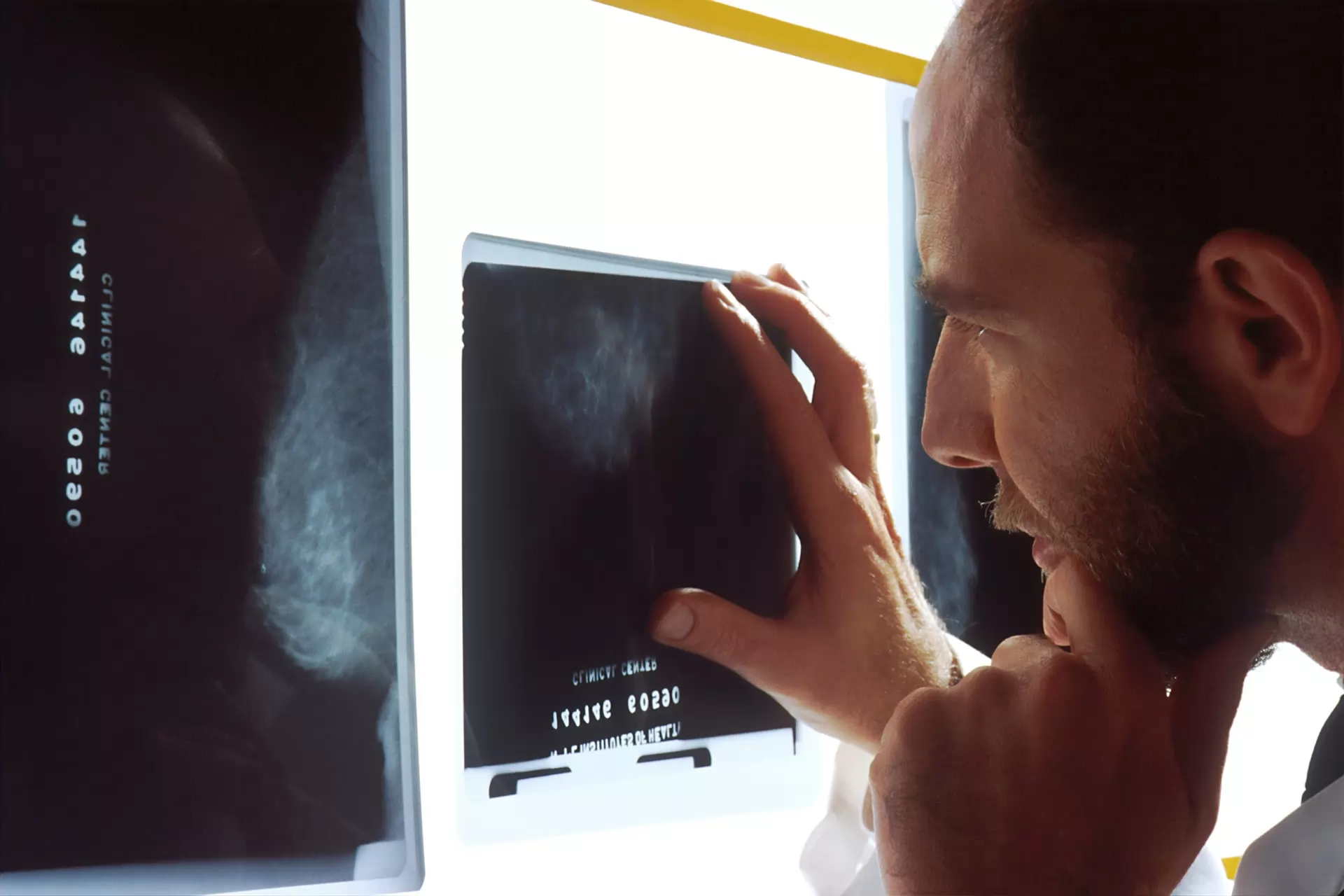




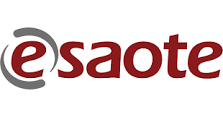 Esaote presenta due nuovi sistemi a ultrasuoni ad Arab Health: MyLab™A50 e MyLab™A70. - 29/01/2024
Esaote presenta due nuovi sistemi a ultrasuoni ad Arab Health: MyLab™A50 e MyLab™A70. - 29/01/2024
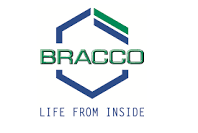 Bracco Imaging riceve il parere favorevole del CHMP per Gadopiclenol - 13/10/2023
Bracco Imaging riceve il parere favorevole del CHMP per Gadopiclenol - 13/10/2023
